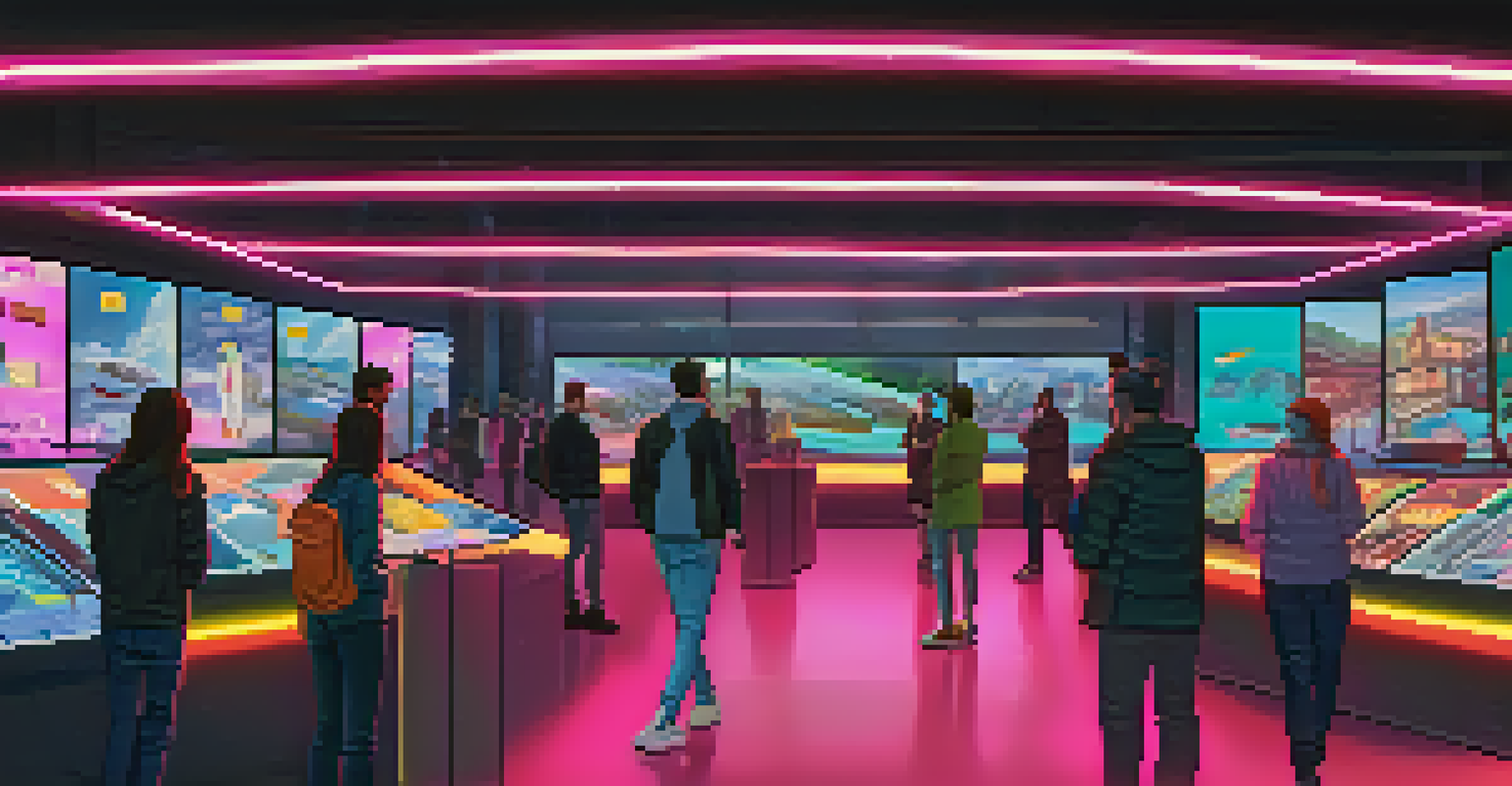The Future of Intellectual Property in the Digital Age

Understanding Intellectual Property in Today’s Digital World
Intellectual property (IP) is a term that encompasses creations of the mind, including inventions, literary and artistic works, and symbols. In the digital age, the importance of IP has skyrocketed as creators produce vast amounts of content online. With the rise of the internet, protecting these creations has become more critical than ever, as digital piracy poses a significant threat.
Intellectual property is the oil of the 21st century.
Digital platforms enable creators to share their work with a global audience, but this also means that their IP is more vulnerable to misuse. For instance, a viral video can be shared and copied within minutes, often without the creator’s permission. This rapid dissemination of content highlights the urgent need for robust IP laws that can adapt to the fast-paced digital landscape.
Furthermore, as technology evolves, so do the challenges surrounding IP. New forms of media, like virtual reality and AI-generated content, are reshaping how we define and protect intellectual property. As we navigate this uncharted territory, understanding the core principles of IP is essential for both creators and consumers.
The Role of Technology in IP Protection
Technology plays a dual role in the realm of intellectual property; it can both threaten and safeguard it. On one hand, tools like file-sharing software and social media make it easy for unauthorized distribution of copyrighted material. On the other hand, advancements in blockchain and digital rights management (DRM) offer innovative solutions for protecting IP rights.

For example, blockchain technology can create a tamper-proof ledger of ownership for digital assets, providing creators with a clear record of who owns what. This could revolutionize the way we manage and enforce IP rights, giving artists and inventors greater control over their work. Imagine a world where every song or artwork has a digital certificate proving its authenticity and ownership.
IP Protection in a Digital Era
As digital content proliferates, the need for robust intellectual property laws has become critical to safeguard creators' rights.
Moreover, AI is also being leveraged to monitor IP infringement online. These intelligent systems can scan the internet for unauthorized uses of copyrighted material, allowing creators to take action more swiftly. As we embrace these technologies, we must also remain vigilant about their implications for privacy and access.
Navigating the Challenges of Global IP Laws
One of the most significant hurdles in the future of intellectual property is the disparity in global IP laws. Different countries have varying levels of protection, which can create confusion for creators who operate internationally. For instance, what’s considered fair use in one country might be seen as infringement in another, complicating matters for artists and businesses alike.
The value of a business is the value of the rights it holds.
As digital content transcends borders, the need for harmonized IP laws becomes increasingly apparent. International agreements, like the TRIPS Agreement, aim to standardize protections, but enforcement remains a challenge. Creators often find themselves grappling with the complexities of multiple legal systems, which can stifle innovation and creativity.
To address these challenges, there’s a growing call for collaborative efforts among nations to develop a more cohesive approach to IP. This includes sharing best practices and establishing frameworks that accommodate the unique aspects of digital content. By working together, countries can create an environment that fosters creativity while protecting the rights of creators.
The Impact of Social Media on IP Rights
Social media platforms have transformed how we consume and share content, but they also complicate the landscape of intellectual property. Users can easily share images, videos, and music, often without understanding the implications for IP rights. This has led to a surge in copyright infringement cases, as creators struggle to defend their work in a fast-paced digital environment.
For instance, memes are a popular form of expression on social media, but their creation often involves using copyrighted images or videos without permission. This blurs the lines between fair use and infringement, leaving many creators uncertain about their rights. The challenge lies in educating users about IP while also fostering creative expression.
Global IP Law Disparities
The varying levels of intellectual property protection across countries complicate the landscape for creators operating internationally.
Additionally, social media platforms themselves have a responsibility to protect IP rights. Many are implementing features that allow creators to claim ownership and monetize their content, but these systems are not without flaws. As we move forward, finding a balance between user-generated content and IP protection will be crucial for maintaining a vibrant creative community.
Emerging Trends in Intellectual Property
As we look to the future, several emerging trends are shaping the landscape of intellectual property. One significant trend is the rise of non-fungible tokens (NFTs), which have gained popularity as a way to buy and sell digital art. NFTs provide a unique solution for proving ownership and authenticity in the digital realm, offering creators new revenue streams.
Another trend is the increasing importance of user-generated content in IP discussions. Platforms like YouTube and TikTok empower users to create and share their own content, often remixing existing works. This raises questions about ownership and attribution, prompting a reevaluation of traditional IP frameworks to accommodate these new forms of creativity.
Additionally, the concept of open-source IP is gaining traction, allowing creators to share their work freely while still retaining some rights. This collaborative approach can drive innovation and foster a sense of community among creators. As these trends continue to evolve, they will undoubtedly influence how we think about and protect intellectual property.
The Role of Education in IP Awareness
Education is crucial in fostering a deeper understanding of intellectual property among creators and consumers alike. Many individuals, especially those new to the digital landscape, may not fully grasp their rights or the implications of their actions online. By providing accessible resources and training, we can empower creators to protect their work more effectively.
Schools and universities can play a pivotal role in integrating IP education into their curricula. Teaching students about copyright, trademarks, and patents can equip them with the knowledge they need to navigate the digital world responsibly. For example, workshops that focus on creating original content while respecting others' rights can foster a culture of creativity and respect.
Education Drives IP Awareness
Empowering creators and consumers through education is essential for understanding and respecting intellectual property rights in the digital age.
Moreover, organizations and industry groups can collaborate to raise awareness about IP issues. Campaigns that highlight the importance of respecting creators' rights can help shift public perception and encourage responsible sharing practices. An informed audience is essential for creating a thriving creative ecosystem.
Looking Ahead: The Future of IP in the Digital Age
As we gaze into the future, the landscape of intellectual property will continue to evolve alongside technology. The challenges may seem daunting, but they also present opportunities for innovation and collaboration. Creators, legal experts, and policymakers must work together to develop solutions that protect IP while promoting creativity and access to information.
One potential path forward is the integration of smart contracts within blockchain technology to automate licensing agreements. This could streamline the process for creators, making it easier to manage their rights and receive compensation for their work. Imagine a world where artists can set terms for their creations and be paid automatically whenever their work is used.

Ultimately, the future of intellectual property in the digital age hinges on adaptability and cooperation. By embracing change and fostering an environment that values both creativity and protection, we can ensure that the rights of creators are upheld while allowing innovation to flourish. The journey ahead may be complex, but it’s one worth undertaking.